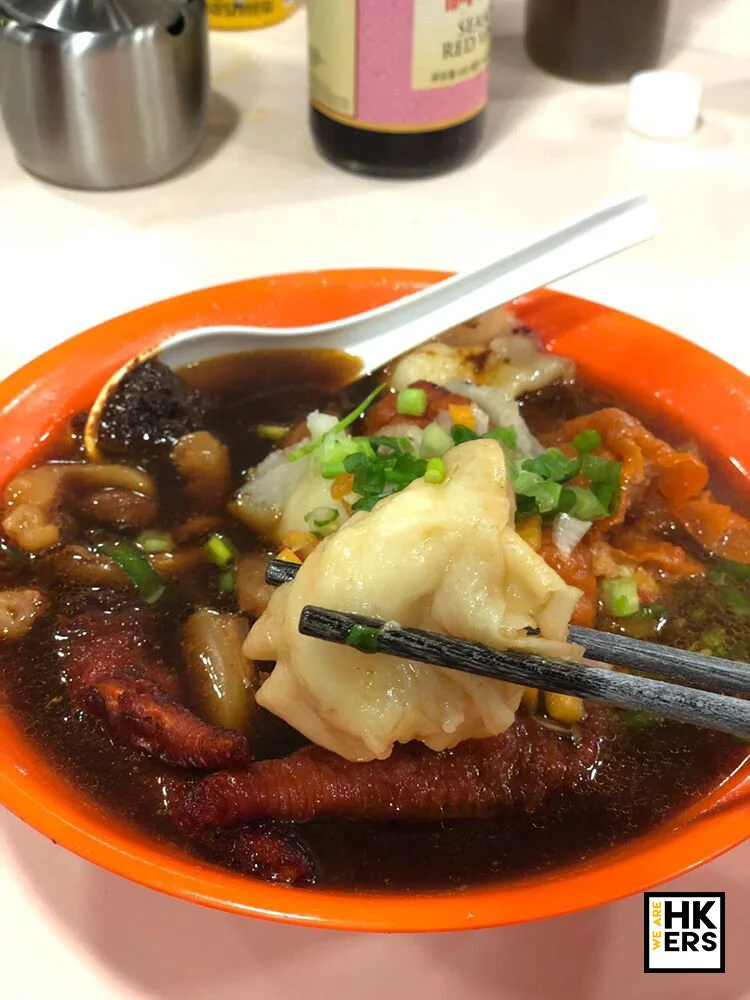Emily Tong | Sham Shui Po’s must-eats from an experienced food editor
Emily is an experienced food editor and proud Sham Shui Po resident of more than 40 years. She previously worked for Weekend Weekly, and is currently a freelancer and occasional PR representative for restaurants. Emily’s food journey includes bringing chefs and foodies from all over the world to food hunting in Sham Shui Po.
“To be honest, I didn’t spend much time dining out in Sham Shui Po when I was young, since I had an abundance of home cooked meals. But as I grew up and started socializing more, I have had a chance to explore what Sham Shui Po has to offer, regardless of whether it’s from the main streets or lesser known alleys, be it traditional snack shops or modern cafés.”
Journalist: Nata
Photos: Provided by interviewee
I’ve lived in Sham Shui Po since I was born. It is the place where I grew up and also where I attended K-12 schools. I can’t imagine moving out of here.
Sham Shui Po is the heart of Hong Kong, as you can travel everywhere from here with a less-than-one-hour commute. It is also a weird and interesting melting pot of merchandises: you’d have a street full of electronic items right next to another selling fabric and handmade trinkets. It’s been compared to Japan’s Akihabara, and my friends often come to hunt for personal treasures. To me, it’s just home.
I have seen a movie theatre transformed into what is now the Golden Computer Arcade, and quiet streets gradually fill with packed crowds. There are a lot of people walking around the area nowadays, especially those of South Asian descent. While some people accuse them of increasing crime statistics, most of the South Asians I know, like the security guard at my building or our chatty neighbours hanging around communal areas, are actually very nice and friendly. I often feel safer at night when I return home, knowing that they are around.
Dining in Sham Shui Po
Knowing that I’m a food editor, a lot of friends ask me for restaurant recommendations in Sham Shui Po. To be honest, I didn’t spend much time dining out in Sham Shui Po when I was young, since I had an abundance of home cooked meals. But as I grew up and started socializing more, I have had a chance to explore what Sham Shui Po has to offer, regardless of whether it’s from the main streets or lesser known alleys, be it traditional snack shops or modern cafés.
I have gotten to know a lot of chefs and foodies around the world through my career. Whenever they want a taste of local cuisine or are looking for ingredients, I’d bring them to have a stroll along the Sham Shui Po streets. They always try out siu mei (Cantonese charcuterie) and street food like spicy fish balls, tofu pudding, and cart noodles, with great enthusiasm.
Cooked food market is also a destination I would always bring chefs to. I prefer the traditional ones that are more local, authentic and sell things catered to the local people. Newer markets tend to focus on imported items, which of course, comes with a higher price tag.
Traditional Hong Kong style bakeries are also few and far between. They are getting replaced by chain bakeries with standardized options and less of a human touch. I used to love Hung Fai Cake Shop, which has unfortunately closed down. Most people only know about their famous ginger and scallion chicken legs, but the egg tarts, Hong Kong-style chicken and mushroom pies, and wheel-shaped breads are even more outstanding. My foreign friends are always fascinated by Hong Kong-style buns, which completely breaks away from their concept of what bread looks and tastes like. Therefore, I like to bring them to Kam Wah Café in Prince Edward for the buttered pineapple bun (boh loh yau).
One cannot skip the famous Kung Wo Beancurd Factory when talking about good food in Hong Kong. A relic of history, it has been operating in Sham Shui Po for more than 100 years, producing high quality fresh soya products day after day without fail.
Kwan Kee Store is another must-go! It is a place very close to my heart as it used to be opposite the street stall my family owned. Kwan Kee started off as a small general store, and they sold white sugar cakes, pudding cakes (put chai ko) and sodas—all part of my cherished childhood memories. Just thinking about how it turned from a tiny shop into a Michelin-recommended entity made me smile.
On top of that, Man Kee Cart Noodles is also worth a shout-out as a tasty local establishment, butfor up-and-rising stars, I must recommend Tomato C Hing*. Their rich and all-natural tomato broth captures the hearts of many, and they also support the social movement, allowing everyone with a conscience to dine at ease here.
As our community evolves, so do our taste buds…
Many modern consumers are now pursuing organic ingredients and adapting to raw food or gluten-free diets. Some would argue that taste is sacrificed in the process. While I am hesitant to make that conclusion, I have always ranked taste as my key selection criteria. I also think “farm-to-table” is a worthy concept, but very difficult to implement within Hong Kong given the scarcity of local farms and high rent.
If we look at journalism, it is being driven by new media which gravitates towards getting clicks and shareable bites, and a lot of times they focus more on quantity rather than quality.
It may sound easy being a food writer or editor, but “enjoying food” takes a lot of effort. Training the palate is the obvious place to start, but more importantly, one needs to understand different food cultures, the sourcing and story of ingredients and the culinary techniques for a dish—all these knowledge is what make an outstanding food editor. Sadly, the importance of these elements seems to be on the decline.
I love Sham Shui Po. It is my home, it is my family, both figuratively and literally. This community has endured a lot, including reckless rounds of teargas in the past year. One cannot start to comprehend why firing tear gas within such a crowded residential area makes sense. Yes, protestors might have brought some short-term inconvenience to the society, but losing our democracy would mean losing the society that we love, and that is a real consequence that would last many lifetimes.
“I am Emily, I am a HKer.”
Support our Journalism with a Contribution
Many people might not know this, but despite our large team of contributors, which we are immensely grateful for, We Are HKers is still a small bootstrapped group that runs on no outside funding and loans. Everything you see today is built on the backs of warriors who have sacrificed opportunities, time, meals and sleep to help give HKers all over the world a voice and keep our culture alive.
However, we still face many trials in the running of our platform, from finding the necessary equipment for our video interviews, to subscribing to the necessary tools to facilitate our remote work process of our global team, to trying not to get fired from our main jobs as we run this project secretly in the background, and to keeping our platform running and storing our files securely.
We hope you consider making a contribution, so we can continue to provide you with moving stories of HKers all over the world and keep our heritage and culture alive. Even a £1 contribution goes a long way. Thank you for everyone’s support. We love you all and can’t appreciate you guys enough.
**Please note that your support of We Are HKers Ltd. does NOT constitute a charitable donation. We really appreciate your support in independent journalism. If you have any questions about contributing to We Are HKers, please contact us here.
- February 2022
- December 2021
- August 2021
- May 2021
- April 2021
- March 2021
- February 2021
- January 2021
- December 2020
- November 2020
- October 2020
- September 2020
- August 2020
- July 2020
- June 2020
- May 2020
- April 2020
- March 2020
- February 2020
- January 2020
- December 2019
- November 2019
- October 2019
- September 2019
- July 2019
- June 2019
*Have a read on Tomato C Hing’s story here: https://www.wearehkers.com/main-english/matthew-lee-free-meals-for-protesters-the-conscience-of-tomato-c-hing-restaurant-owner





















